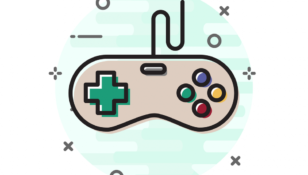Google Play Store Everything You Need to Know

Introduction:
The Google Play Store, also known as the Google App Store, is an essential hub for Android users, providing a vast collection of applications, games, movies, books, and more. Whether you are an app developer or a tech enthusiast, understanding the significance of Google Play Store is crucial. In this article, we will delve into the history, development, and important aspects of the Google Play Store.
Historical Evolution of Google Play Store:

The Google Play Store didn’t always exist in its current form. It underwent several transformations throughout its history. Let’s take a closer look:
1. Android Market (2008-2012):
In October 2008, Google launched the Android Market alongside the release of the first Android-powered smartphone, the T-Mobile G1. Initially, it had a limited selection of apps, mainly focused on productivity and basic utility. Over the years, the Android Market expanded with more apps and categories.
2. Google Play Store (2012-present):
In March 2012, Google merged the Android Market, Google Music, and Google eBookstore, creating the Google Play Store. This evolution brought together various media types and allowed users to access apps, music, movies, books, and more, all under one platform. It aimed to provide a seamless user experience and become the go-to destination for digital content.
Important Aspects of Google Play Store:
Now that we have covered the history, let’s delve deeper into the key aspects of the Google Play Store that every tech enthusiast should know:
1. App Categories:
The Google Play Store offers a wide range of app categories, catering to diverse user interests. Some prominent categories include Communication, Social Media, Entertainment, Productivity, and Gaming. This extensive selection allows users to find apps tailored to their specific needs and preferences.
2. App Ratings and Reviews:
App ratings and reviews play a significant role in determining an app’s credibility and quality. Users can provide feedback and share their experiences with an app, enabling others to make informed decisions. Higher-rated apps with positive reviews are more likely to attract downloads and enjoy better visibility in the store.
3. Featured Apps and Editors’ Choice:
The Google Play Store showcases featured apps and games that stand out due to their exceptional quality, innovation, or popularity. These selections are based on various factors, such as user ratings, functionality, and overall relevance. Being featured can significantly boost an app’s visibility and downloads.
4. In-App Purchases and Subscriptions:
Many apps in the Google Play Store offer in-app purchases or subscriptions, allowing users to access additional features, remove ads, or unlock premium content. This model creates revenue opportunities for app developers while providing users with options to enhance their app experience.
5. App Updates and Security:
Google Play Store ensures that apps remain up to date and secure. It regularly checks for app updates, notifying users when new versions are available. These updates often include bug fixes, performance improvements, and new features. Additionally, the Play Protect feature scans installed apps for malware to maintain a secure environment for users.
6. Developer Platform and Policies:
The Google Play Store provides a comprehensive developer platform, empowering app creators to publish their creations worldwide. It offers various tools, resources, and guidelines to streamline the app development process. Developers must adhere to strict policies, ensuring the quality, safety, and appropriate content of their apps.
Conclusion:
The Google Play Store has revolutionized the way we discover and access digital content on Android devices. With its vast selection of apps, games, movies, and books, it has become an integral part of the Android ecosystem. By understanding its history and key aspects, tech enthusiasts can fully appreciate its significance and make the most out of this dynamic platform.
References:
– Williams, J. (2019). History of the Google Play Store. Lifewire. Retrieved from [INSERT LINK]
– Google Play Developer Documentation. Retrieved from [INSERT LINK]
– Wagner, A. (2020). Google Play Store: How to Get More Downloads. Mobile Action Blog. Retrieved from [INSERT LINK]

















